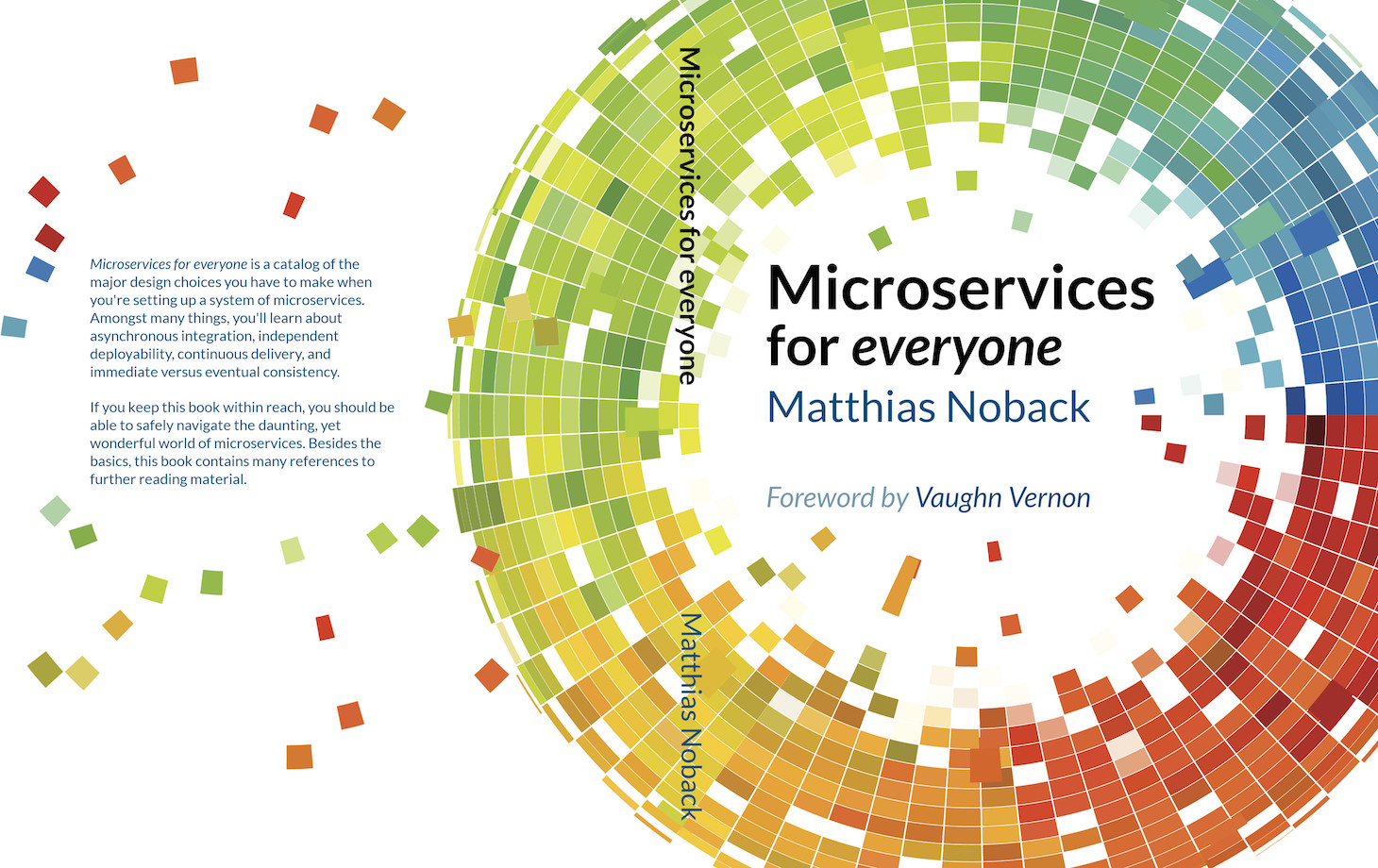The release of "Microservices for everyone"
Matthias Noback
Today I’m happy to release my latest book, “Microservices for everyone”! 90% of it was done in July but you know what happens with almost-finished projects: they remain almost-finished for a long time. I did some useful things though, like preparing a print edition of the book.
Foreword
Finally, and I’m very proud of that, I received Vaughn Vernon’s foreword for this book. You may know Vaughn as the author of “Implementing Domain-Driven Design”. It made a lot of sense to ask him to write the foreword, since many of the ideas behind microservice architecture can be traced back to messaging and integration patterns, and Domain-Driven Design. Vaughn is an expert in all of these topics, and it was only to be expected of him to write an excellent foreword.

[…] Microservices, if used responsibly and properly, will tend to solve these three big problems. Teams can be made smaller and more fluid, allowing each developer to work on multiple microservices. This is also a significant investment in developer knowledge of the overall business. There will be one repository and one database (or database schema) for each microservice, having little to no impact on other microservices and teams. Further, the cloud can be an important move toward the successful on-time deployment and resiliency of microservices, and even better support the specific infrastructural and technical mechanism needs of each microservice. Spin up a new server or cluster in no time, and keep them running with no new administrative burden on your organization.
— Vaughn Vernon
PHP
I’ve been asked: “Is this book written for PHP developers?” There are two answers:
- No. The code samples in this book and in the accompanying source code repositories are written in PHP, but you don’t need to know PHP to be able to understand what’s going. In fact, the main text of the book doesn’t make any assumptions about the languages and tools you use.
- Yes. My secret mission was to make PHP developers more familiar with the concept of asynchronous service integration and related topics like eventual consistency.
So basically, I expect this book to be interesting for everyone, no matter what programming language they use or prefer.
Where to buy
Besides the completed e-book (EPUB, MOBI and PDF), you can now order physical copies on Amazon. You can also order the book in non-US stores, e.g. in the UK and Germany.

To celebrate the release, I offer you a discount on the e-book (use this link). I’d love to do the same for Amazon purchases, but the publishing platform doesn’t offer this functionality.
What people say about this book
Release time is not a time to be modest, so here’s a number of comments about this book which make me very happy:
“This book showed me what I needed to know to actually start playing with microservices. It had the right blend of why and how without too much focus on implementation details. Highly recommended!” — Beau Simensen
“Read, Learn, Succeed! A comprehensive and really complete guide for creating microservices from scratch! Matthias can abstract the topic complexity in this book that is really, for everyone.” — Christophe Willemsen
“As Microservices become more and more popular each day, it’s important for professional developers to familiarize themselves with the basic concepts. As with his previous books, Matthias explains these concepts well, in a clear and concise manner. His examples are useful, and the reader is presented with a solid introduction to using Microservices. Highly recommended!” — Mark Badolato